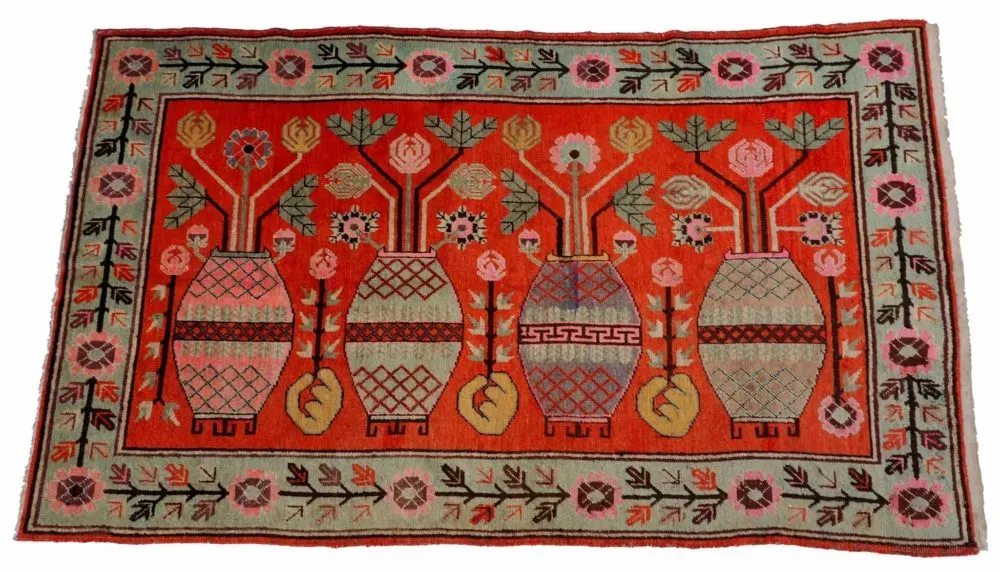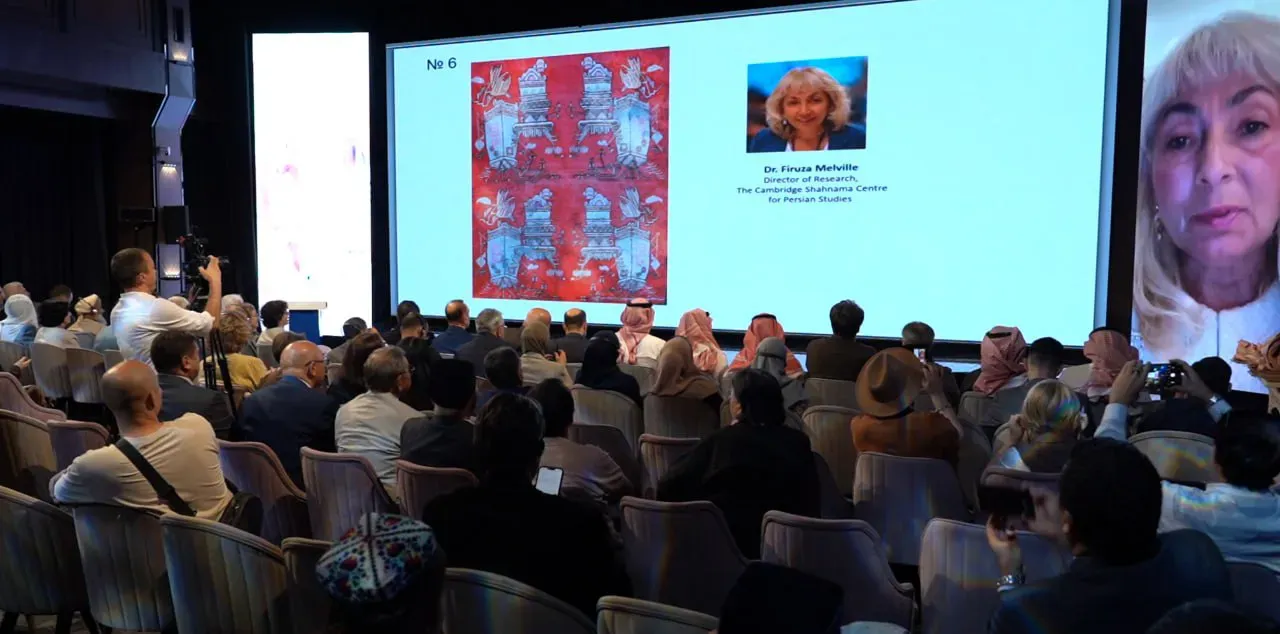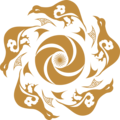Khotan (Xinjiang, China) for centuries served as an important crossroads of the Great Silk Road. Through trade routes passing through this area, carpets spread throughout the world not only as a household item but also as a carrier of culture and spirituality. Therefore, the harmony of Bactrian, Iranian, Chinese, and Indian cultures is clearly visible in them.
Khotan carpets were woven in the territory of East Turkestan. They are known not only for their high craftsmanship, but also for their deep spiritual symbols.
Today, Khotan carpets are stored in the Museum of Oriental Art in Moscow and in major British auction houses. It is the Khotan carpet in the Museum of Islamic Studies in Cambridge that stands out in terms of patterns and colors. It features a "vogel" - a stylized flower vase. It is interpreted as a symbol of spring, renewal, and life. The surrounding flowers are a symbol of femininity, elegance, and fertility.

This carpet, with a 200-year history, was donated to the Center of Islamic Civilization in Uzbekistan. The valuable exhibit will now be included in the exposition of the Center's museum. This was reported by the ISM information service.

